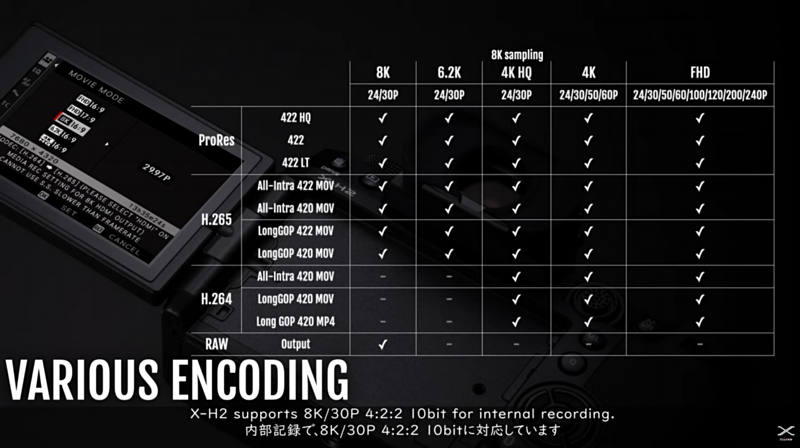
-
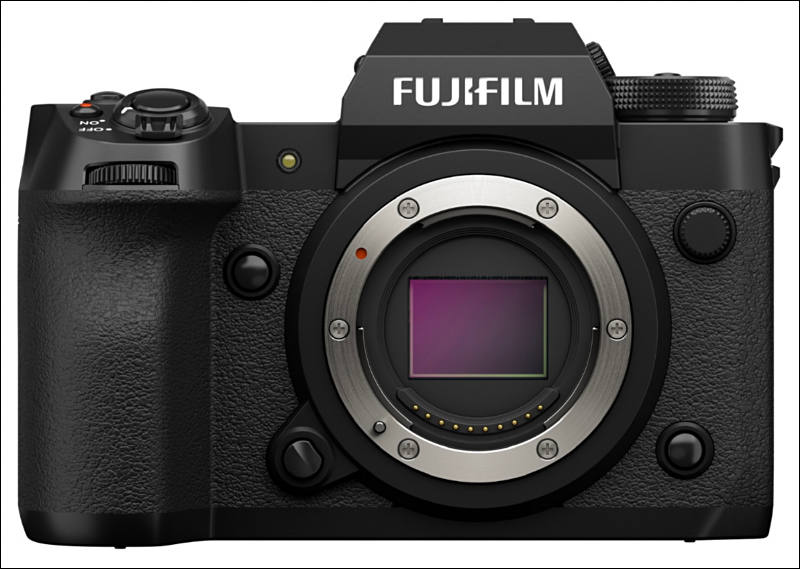
Specs:
- 40MP APS-C BSI-CMOS
- Main CPU - X-Processor 5
- Cheap 1,620,000dot fully orticulated LCD
- 5,760,000dot 1.2x viewfinder
- 15 fps serial shooting
- H.264, H.265 recording formats
- 8K/30P video for up to 30 minutes
- 4K and UHD up to 60p
- 1x CFexpress Type B, 1x UHS-II SD slots
- 660 g (1.46 lb / 23.28 oz)
- Dimensions 136 x 93 x 95 mm (5.35 x 3.66 x 3.74″)
- Price around $1999, certainly below $2499
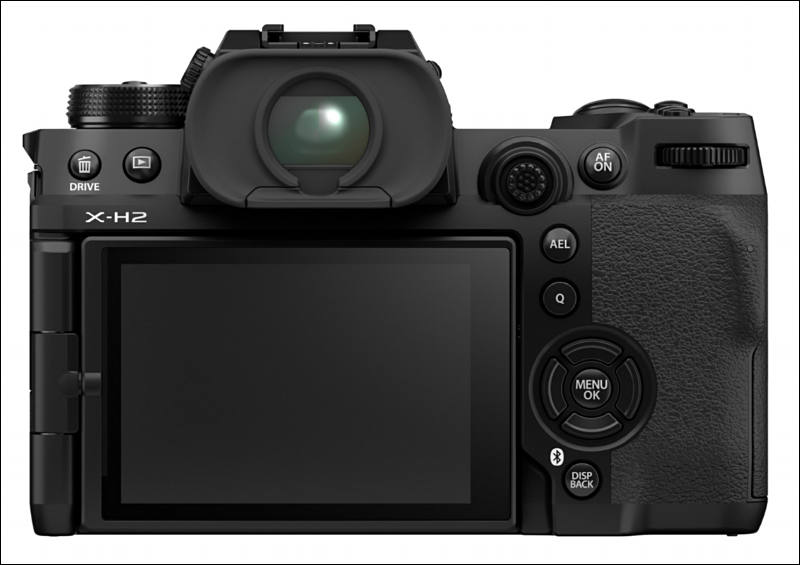
-
@joethepro "The special 6 by 6 pattern of Fuji’s color filter allegedly eliminates moire"
This is a misconception, the X-Trans pattern does not eliminate more, it just changes its structure from repetitive to something else (also ugly IMO).
"-less color noise at high ISO "
Cause Adobe embeds some NR processing by default for X-Trans, which can't be deactivated. If you edit an X-Trans file in RAWTherapee for example you'll see what I mean.
"Brutally short conclusion: -X-Trans is better for image quality"
This is simply false and proven otherwise!
After my own research and tests, X-Trans brings more problems to the table and in the end, the image quality is simply inferior to the Bayer pattern! How much inferior? It depends on the RAW demosaicing algorithms, software used etc. But if man is happy with those compromises, Fuji has some distinctive and attractive products.
-
Found some info from 2-3 yr old articles. How representative the info is to real life... not sure.
For anyone who needs a refresher, Fuji’s X-Trans sensors replace the standard Bayer filter with a different type of color filter of Fuji’s own design. The special 6 by 6 pattern of Fuji’s color filter allegedly eliminates moire, allowing Fuji to leave out the low-pass filter found in most digital cameras, thereby increasing resolution. It does, however, come with some drawbacks as well, including some well-known imaging artifacts.
But how noticeable are these artifacts? Can you even see the difference if you’re not looking for it, and weren’t they largely solved by the latest iteration of X-Trans? That’s what Andrew wanted to find out...https://petapixel.com/2020/05/29/blind-test-fujifilm-x-trans-vs-bayer-filter-which-is-better/
This is a super short condensation and simplification of more complicated subjects, and as such it is naturally an inaccurate list. Each point will elaborated and clarified in all its shades below.
X-Trans Pros
-less color noise at high ISO
-less moiré (an advantage that will become negligible once APS-C sensor go beyond 30MP)
-sharper compared to cameras with same pixel number and optical low pass filter, unless the processing in camera is very aggressive, like on X-A5 and X-T100
-more pleasing “film-like” grain at high ISO
Bayer Pros
-20%-30% less processing power required (possible benefits listed below)
-cheaper to produce than X-Trans
Brutally short conclusion:
-X-Trans is better for image quality
-Bayer is better for features and speed, unless Fujifilm can compensate for the extra 20-30% processing power required by the X-Trans sensor with a more powerful processor (present in Fujifilm X-T3), new sensor tech for faster sensor readout (maybe stacked sensor) and better heat management (present in X-H1) -
@Eno I wonder if the tradeoff of not using a bayer brought other benefits in other areas? But yes I agree, the XH2 cameras are great, and 26MP is enough for me, but I want it to actually resolve reasonably close to 26MP! Maybe the pixel peeping is just blowing it out of proportion.
-
@joethepro Fuji is using Bayer sensors but only on their GFX medium format cameras and some entry lv APSC ones. It's beyond me why they don't want to offer Bayer alternatives to the XH2 series.
And by the way, Fuji cameras have other great points, don't look exclusively at what I've posted, it's always best to make an informed decision based on your personal needs and likes.
-
Looking at the bottle cap, I don't think the focus points are the same for the comparison photos. My comparisons of the A1 and the Fuji didn't show a huge difference in the photos, but I wasn't using fabric.
-
@Eno Yah I noticed the color detail, the darker reds, on the fabric seemed much better on the sony/bayer sensor. I wonder why Fuji would not use bayer if it produces obviously inferior images?
Also the sony/bayer seems sharper. Is this a result of bayer tech vs x-trans? It's a bit disappointing, as I was considering purchasing a Fuji. I'll have to reconsider.
@DrDave Thanks for the info. I'm sure the difference is less apparent in video than photo.
-
@joethepro "Wow, didnt realize how sharp the sony sensor is, comparatively."
It's not about Sony sensors, the comparison is between Bayer and X-trans. The difference in color detail is because of the pixel pattern on the sensor. Bayer is simply better compared to X-Trans.
-
Our H2 are superb video cameras. The Sony A1 is a tiny bit sharper for video, but it's tiny. Fuji color is great.
-
Wow, didnt realize how sharp the sony sensor is, comparatively. Is it that the sony is just really sharp, or that the fujis are just a little on the soft side (or both)?
-
Fuji 40 MP X-Trans sensor almost catches up in resolution to a 24 mp Bayer one.
Original RAW samples from Imaging Resources.
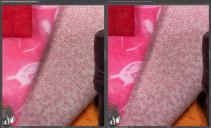
 XH2-vs-A6300---400-procent.jpg3274 x 1988 - 2M
XH2-vs-A6300---400-procent.jpg3274 x 1988 - 2M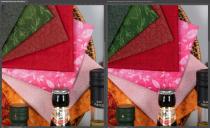
 XH2-vs-A6300.jpg3264 x 1986 - 2M
XH2-vs-A6300.jpg3264 x 1986 - 2M -
All my manual lenses work fine, including zooms. Even the old AF ones like my minolta 100mm prime works with the iris control lever on the adapter.
The shoot without lens is buried in a submenu but it is there. In camera IS may be a bit better on the GH6 still figuring it out. Also, the magnification is better and sharper, and if you set the peaking to low you can fine tune the focus to half an inch.
IQ is unreal and lower noise, finer grain. Sort of Sony A1 looking but obviously not the same in very low light. -
@DrDave From the videos I've seen, I agree on this camera having the best tools for manual focus.
Are you able to use an adapted fully manual lens and report your experience? I don't suppose you would have a manual Zoom laying around to test.
-
IQ on this camera blows away the GH6 for video. Not sure yet if image stabilization is as good.
-
Fuji X-H2 arrived today--this thing is awesome! 8K 10 but 422 on cheap sd cards, Fuji color, huge variety of codecs/bitrates, LCD display on top, 24 bit audio, really a rockin' cam for 2K.
Using my Canon and Sony lenses with an adapter, ordered the budget 85mm. EF 10-18 is like really, really wide.
Camera is a bit heavy and chunky with nice, deep grip. Focus assist is as good as it gets for pinpoint magnification, better than Sony and Panasonic.
Did I mention 8K 10 bit 422? -
I ordered one. Why not?
-
Great camera, bad price. I will be suing my great XT3. :(
-
Focus might have been fooled by the glass window?
-
The changes in exposure/out of focus/flicker when using zoom lenses continues on the X-H2 even when using their newest video lens 18-120mm f4. This is evident throughout the video, but particularly at 1m 20s
-
PR
FUJIFILM Corporation announced the launch of the FUJIFILM X-H2 mirrorless digital camera (X- H2). X-H2 features the new, back-illuminated 40.2MP "X-TransTM CMOS 5 HR" sensor and the high-speed "X-Processor 5", boasting the highest resolution in the X Series lineup in both stills and videos, as well as becoming the world's first¹ APS-C camera to enable 8K/30P Apple ProRes internal recording.
"X-H2 joining the flagship X-H family is not only huge for us at Fujifilm, but it is also especially significant for our consumers", said Victor Ha, vice president of the Electronic Imaging and Optical Device Divisions, FUJIFILM North America Corporation. "X-H2S, which debuted in May, excels in speed, perfect for image makers who create moving content. X-H2 delivers exceptional image resolution and quality that are ideal for those creating images in super-high detail. We listened to our customers and took their feedback to heart, creating this amazing family of X-H cameras that are tailor-made to their distinct specialties."
Main product features:
New X-TransTM CMOS 5 HR sensor and the high-speed X-Processor 5
Exceptional image quality delivered by the new sensor is complemented with advanced features including minimum standard ISO125, and the high-resolution 40.2MP sensor of the X-H2 has a unique image-processing algorithm designed to enhance image resolution without compromising the signal to noise ratio, producing astonishing image quality. This allows users to the fastest shutter speed available within the X Series (the electronic shutter has been increased by 2.5 stops from leave the aperture wide open in bright or high-contrast conditions such as on a sunny beach or a ski slope, or to instantly freeze motion down to a millisecond.
X-H2 is the first X Series camera featuring the Pixel Shift Multi-Shot function, which is ideal for commercial photography and digital archiving applications that need hi-resolution images with flawless color accuracy. Using the camera's in-body image stabilization (IBIS) mechanism to shift the image sensor with immense precision, 20 reference images are automatically created and later assembled in post-production using the dedicated "Pixel Shift Combiner" software. The result is a 160 Megapixel image, constructed from the total information available from each RGB pixel found on the X-H2's new X Trans 5 CMOS HR sensor.
X-H2 also supports the HEIF image format, which delivers 10-bit image quality in files up to 30% smaller than standard JPEG files, continuing to expand Fujifilm's reputation of delivering high-quality images straight out of camera.
Excellent performance for professional video production needs
With the new sensor, 8K movies can be recorded internally at 30P in 4:2:2 10- bit color. X-H2 has a heat-dissipating design -- same as the X-H2S -- to enable recording of 8K/30P video for up to 30 minutes². X-H2 is also capable of producing high-quality 4K (4K HQ) video, which is oversampled from 8K as it is being recorded internally. The result is an image that makes maximum use of the camera's high-resolution sensor to record video with optimal image quality.
X-H2 supports three Apple ProRes codecs; ProRes 422 HQ, ProRes 422, and ProRes 422 LT, with the option to also record ProRes 422 Proxy³ to help streamline post-production workflows when editing in 8K.
With the help of X-Trans CMOS 5 HR, X-H2 is capable of delivering up to 2x of digital zoom with little-to-no loss in resolution, when recording video in 4K, even with a prime lens attached to the camera.
With Fujifilm's FUJINON XF18-120mmF4 LM PZ WR lens, zoom movements seamlessly transition to the digital zoom function when the lens reaches its maximum focal length.
Combined with a compatible HDMI device from Atomos or Blackmagic Design, 12-bit 8K/30P RAW video output from X-H2 can be recorded as Apple ProRes or Blackmagic RAW, while the newly developed F-Log2 flat picture profile expands dynamic range up to 13+ stops, which broadens color-grading options in post-production.
Evolved autofocus (AF) performance to accurately capture details
X-Processor 5 features subject-detection AF based on deep learning technology that automatically detects and tracks a broad and diverse range of subjects, including animals, birds, cars, motorcycles, bicycles, airplanes, and trains.
The new, high-resolution sensor offers optimal ability to attain AF-S focus on a subject with high-frequency. Users can easily autofocus accurately in situations where AF-S is typically used, such as landscape and portrait photography. X-H2 also incorporates an AF prediction algorithm which has been improved from that of previous X Series models.
X-H2 is equipped with a focus meter as a manual focus assist during movie recording, allowing for more precise focus adjustment. It can also be used in combination with focus peaking.
The video AF algorithm has been optimized for autofocus accuracy, giving users a sense of confidence in using AF while filming 8K video.
Hardware and workflow that support users' content creation experience
A 5-axis in-body IBIS⁴, made possible by X-Processor 5 and a sensing control function, gives the freedom to handhold in conditions that previously may have required support. In addition, the IBIS function enables the image sensor to be precisely shifted, for the camera's Pixel Shift Multi Shot function.
X-H2 is equipped with a high-magnification and high-definition 5.76-million-dot EVF with 0.8x magnification. It boasts a smooth refresh frame rate of approximately 120fps and offers significant control over parallax and distortion which typically occurs when an eye position becomes displaced while using the viewfinder.
The body design is the same as X-H2S. With 79 weather-sealed points offering a high level of dust and moisture resistance, X-H2 is built to withstand the rigors of daily professional use and operate as normal in temperatures as low as 14°F (-10°C). The top panel LCD screen, adjustable AF ON button,1.62 million-dot vari-angle LCD monitor, and an independent movie recording button support comfortable operability.
X-H2 has one CFexpressTM Type B memory card slot and one UHS-II SD memory card slot. CFexpress Type B cards⁵ are needed to realize the full potential of X-H2's professional video performance.
X-H2S / X-H2 can be combined with the file transmitter "FT-XH" to enable wired and wireless LAN tethered video recording⁶. Up to four X-H2S / X-H2 cameras can be connected simultaneously to enable the following operations from a computer browser:
- Check and adjust camera settings for each camera
- Simultaneously start and stop video recording for all cameras
- Save, load, and copy camera settings⁷
Optional accessories:
- VG-XH - Vertical battery grip (for the X-H2S / X-H2)
- This vertical battery grip is dust and moisture--resistant and is designed to operate at temperatures as low as 14°F (-10°C). It operates with two of Fujifilm's NP-W235 high-capacity batteries.
- The grip's button layout is designed to provide optimal operability whether holding the camera vertically or horizontally.
- FT-XH File transmitter (for the X-H2S / X-H2)
- This file transmitter features wired LAN connectivity and high-speed wireless communications capability, essential for in-studio tethered content creation or for creating sports/media content. It can also be used as a vertical grip with two of Fujifilm's NP-W235 high-capacity batteries.
- It can be combined with the X-H2S / X-H2 to support the following communication specifications:
- FTP data transfer by wired LAN / wireless LAN / USB Smartphone tethering.
- Tethered shooting by wired LAN / wireless LAN.
- Remote recording function by wired LAN / wireless LAN; capable of controlling up to four X-H2S / X-H2 cameras from a browser at the same time.
- FAN-001 Cooling fan (for the X-H2S / X-H2)
- Specifically designed for the X-H2S / X-H2 to facilitate extended video recording and operation in high temperatures.
- The fan can be attached to the rear of the camera body without a cable, supplying power and extending continuous video recording time as the camera heats up and otherwise when operating in high temperatures, thereby eliminating concerns of heat-related camera shutdown.
- CVR-XH Cover kit (for the X-H2S / X-H2)
- This cover kit for the X-H2S / X-H2 protects various terminals on the camera. Items included in the kit:
- 1 x Sync terminal cover
- 1xHotshoecover
- 1 x File transmitter / vertical battery grip terminal cover o 1 x Cooling fan terminal cover
- 1 x Memory card slot cover
- This cover kit for the X-H2S / X-H2 protects various terminals on the camera. Items included in the kit:
Pricing and Availability
FUJIFILM X-H2 mirrorless digital camera is expected to be available late September 2022, at a manufacturer's suggested retail price of $1,999.95 USD ($2,550 CDN) for the camera body and $2,499.95 USD ($3,200 CDN) for the X- H2 digital camera with XF16-80mmF4 R OIS WR lens kit.
Pricing and expected availability for X-H2 accessories are as follows:
VG-XH Vertical Battery Grip: Available now at a Manufacturer's Suggested Retail Price of $399.99 USD and $515 CAD.
FT-XH File Transmitter: Expected to be available in late October 2022 at a Manufacturer's Suggested Retail Price of $999.99 USD and $1,280 CAD.
FAN-001 Cooling Fan: Available now at a Manufacturer's Suggested Retail Price of $199.99 USD and $260 CAD.
CVR-XH Cover Kit: Available now at a Manufacturer's Suggested Retail Price of $19.99 USD and $26 CAD.
For more information about X-H2 and its accessories, please visit https://fujifilm- x.com/en-us/products/cameras/x-h2/.
-
@Eno Some of those photos look weird. I have a photo camera already, just need a box of 8K :)
I guess I assumed the video quality would be as good as previous Fuji cameras, I guess we will see soon enough. -
It's a "Game changer" only until you see the images out of it: https://www.dpreview.com/samples/3916819862/fujifilm-x-h2-pre-production-sample-gallery-dpreview-tv
The X-Trans artifacts and waxiness are very disturbing IMO. Just take a look at the second image in the gallery, the one with vegetation. The tries don't have leaves but waxy leaves and the details look like from a quad Bayer demosaicing (low on details and high on artifacts).
If it had a Bayer sensor then yes, it could have been called a game changer, but as it is, it's very unappealing to me!
Howdy, Stranger!
It looks like you're new here. If you want to get involved, click one of these buttons!
Categories
- Topics List23,992
- Blog5,725
- General and News1,354
- Hacks and Patches1,153
- ↳ Top Settings33
- ↳ Beginners256
- ↳ Archives402
- ↳ Hacks News and Development56
- Cameras2,367
- ↳ Panasonic995
- ↳ Canon118
- ↳ Sony156
- ↳ Nikon96
- ↳ Pentax and Samsung70
- ↳ Olympus and Fujifilm101
- ↳ Compacts and Camcorders300
- ↳ Smartphones for video97
- ↳ Pro Video Cameras191
- ↳ BlackMagic and other raw cameras116
- Skill1,960
- ↳ Business and distribution66
- ↳ Preparation, scripts and legal38
- ↳ Art149
- ↳ Import, Convert, Exporting291
- ↳ Editors191
- ↳ Effects and stunts115
- ↳ Color grading197
- ↳ Sound and Music280
- ↳ Lighting96
- ↳ Software and storage tips266
- Gear5,420
- ↳ Filters, Adapters, Matte boxes344
- ↳ Lenses1,582
- ↳ Follow focus and gears93
- ↳ Sound499
- ↳ Lighting gear314
- ↳ Camera movement230
- ↳ Gimbals and copters302
- ↳ Rigs and related stuff273
- ↳ Power solutions83
- ↳ Monitors and viewfinders340
- ↳ Tripods and fluid heads139
- ↳ Storage286
- ↳ Computers and studio gear560
- ↳ VR and 3D248
- Showcase1,859
- Marketplace2,834
- Offtopic1,320






